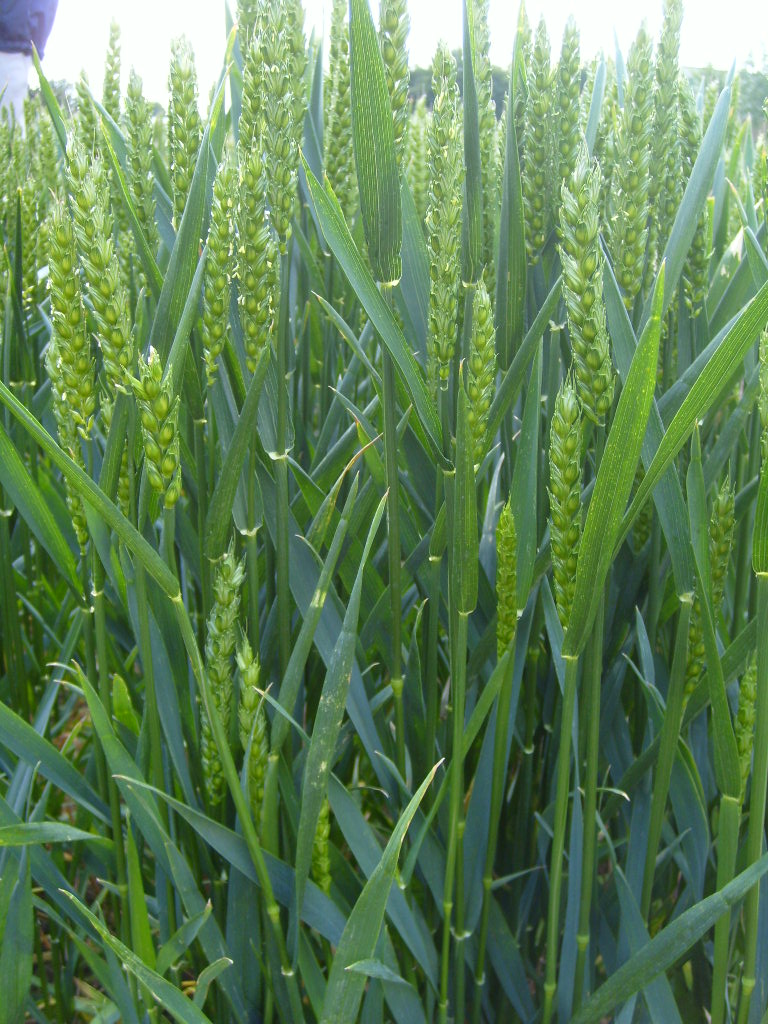Growers need to look behind the headline figures and fully understand the robustness of their wheat variety genetics, urges Ron Granger, arable technical manager with Limagrain UK.
“This season we have seen unprecedented levels of foliar disease from aggressive yellow rust races and some of the worst Septoria tritici pressure that has been seen for many seasons. On top of this high levels of take-all were seen at the end of the season affecting both first and second wheat yield potential.”

Generally, the ability of wheat varieties to withstand this disease pressure has been very varied, with some genetics holding up well whilst other varieties have succumbed to the intense pressure, says Ron Granger of Limagrain
“Generally, the ability of wheat varieties to withstand this disease pressure has been very varied, with some genetics holding up well whilst other varieties have succumbed to the intense pressure.”
The AHDB provisional harvest results for 2016 state that the average wheat yields for 2016 were 10.7t/ha, which is close to the five year average of 10.6t/ha, and Mr Granger points out that whilst there were not many stand out yield performances from wheats this harvest, it’s the consistency of a varieties performance over differing seasons that is key, and one that he encourages growers to understand better.
“If a variety has managed to hold its own and produce yields up around the five year average in what was one of the most challenging disease years, then you can be fairly confident that the genetics behind that variety are well tested and will continue to hold up to current “known” pressures, and the same principle would apply to quality.”
By looking at the five year average yield results on the AHDB RL, it is possible to see how a particular variety has performed over the last five seasons as well as this year. This is almost more important, especially as we would appear to be in cycles of erratic weather patterns that have produced very high disease pressure seasons – notably 2012 / 2014 and 2016, continues Mr Granger.
“Evolution has performed very well this season both in a first wheat situation and in the more problematic second wheat situation, and like KWS Santiago shows very good consistency for yield over many seasons which growers consider an important attribute for continual on farm performance.

Sean Sparling, vice chair of the Association of Independent Crop Consultants (AICC), agrees. “Genetics are based on a combination of factors that include parentage, varietal traits and breeding and it is how these respond to rotational position and seasonal factors that causes the variances in performance in varieties that we see from season to season.”
Evolution has been one of the best performing varieties for Sean Sparling’s clients.
“It has one of the highest five year average yields at 102% over control, and irrespective of soil type the variety has done very well this season, with one light, brashy, stony site in Lincolnshire yielding over 12t/ha, which is pretty impressive for this harvest.”
“In my mind, it’s always better to grow a safe and consistent variety that you know is going to yield, rather than try an unproven variety on the promise of an extra 1-2%.”
Down in the south, the story is similar; the more consistent varieties certainly fared better overall than the more ‘temperamental’ varieties, and again this is where the five year mean is important to take into account as it’s possible to see how the variety has performed season after season, says Nick Wall, of independent agronomy group, Crop Management Partners.
“Although Crusoe would appear to be a lower yielding variety on the AHDB RL, the story on farm would appear to be very different with the variety performing very well with high yields and protein contents achieved. Whilst Crusoe is a Group 1 milling wheat, the variety is successfully being grown as a feed wheat in regions of high disease pressure indicating that security of on farm performance is critical for growers today in a very volatile market.”
Whilst it is easy to blame a dull and wet June and very dry July for the depressed yields there is also the impact of disease to consider, and this is where the five year average also tells the full story when looking at the untreated yields, adds Mr Granger.
“Taking Crusoe for example, it continues to offer robust disease resistance ratings with a good 6 for Septoria tritici and fusarium ear blight, a 9 for yellow rust and a 7 for mildew. Growers are aware of its lower rating for brown rust and this is managed appropriately with fungicides and the variety’s performance this season when challenged by some of the most severe disease conditions has held out -demonstrating how robust these resistance ratings really are.”
“The reality is that we don’t know what the next season is going to throw at us, there are so many unknowns in this game – grain prices, weather patterns, disease pressure and even the impact of Brexit, so start by minimising risk wherever possible- and one of these areas is choosing the right wheat variety by looking behind the yield headlines.”





